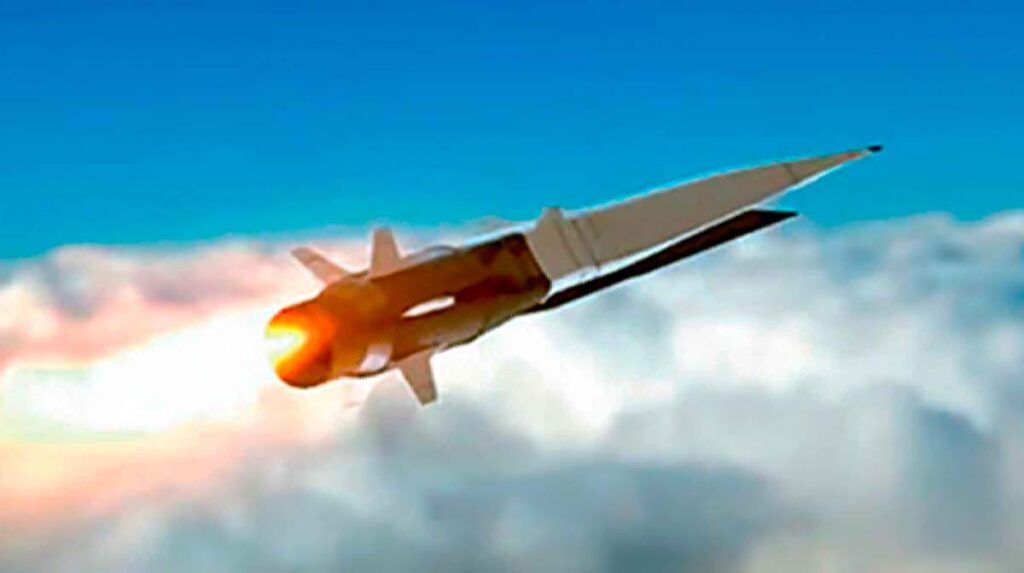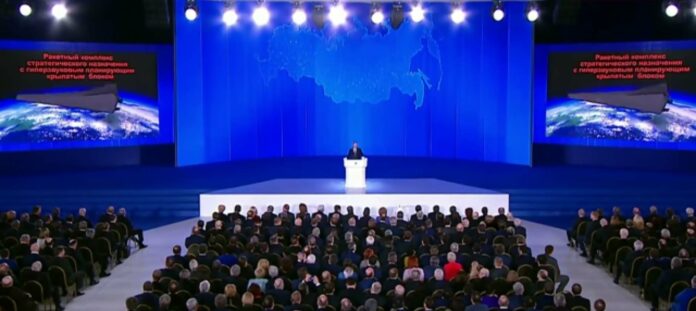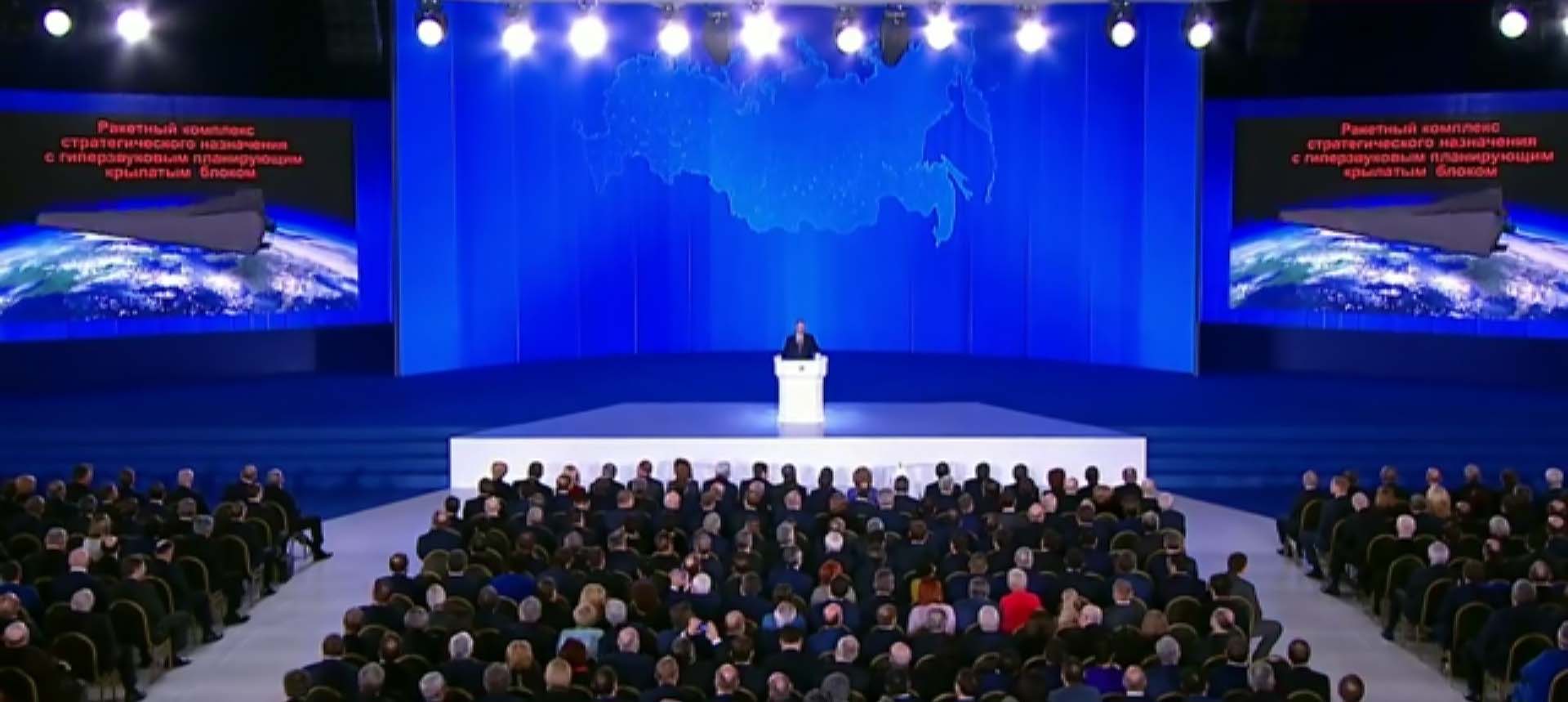Against the backdrop of a serious crisis in the eastern confines of Ukraine, where the sound of boots on the ground makes us fear a new Russian military offensive, the Kremlin has ordered the firing of a salvo of hypersonic “Zircon” missiles, and this on Christmas Eve (according to the Gregorian calendar). Vladimir Putin welcomed this success: “a great event for the country and a significant step to strengthen Russia’s security and defense capabilities”.
In truth, this is not the first test, but it comes in a particular context, when the Kremlin clearly and explicitly sets out an ultimatum which requires the West to sign two treaties ordering the withdrawal of NATO and thus, in the short term, its scuttling (cf. Françoise Thom).
Hypersonic and ultra-precise weapons
In the minds of the Russian leaders and many commentators across the border, excited by the possibility of a great war with hegemonic aims, it is not so much a question of demonstrating the advance acquired in the range of so-called “new” weapons as of intimidating and threatening Europe and the United States. And the discretion of Western leaders with regard to these repeated tests leaves one doubtful.
This raises the question of the possible effects of these “new weapons”. Could this be a technological breakthrough, the vector of a strategic revolution? In other words, the problem is to know if Russia, posed by its leaders as a revisionist power, ready to resort to arms to modify the international status quo, aligns its geopolitical discourse, its military system and its strategy.
One recalls Vladimir Putin’s speech to parliament on March 1, 2018, when the Russian president presented a program of new missiles that impressed the Russian ruling class and many international observers. These so-called breakout weapons are hypersonic (i.e., a speed greater than Mach 5), at least on part of their trajectory. They are presented as being capable of performing manoeuvres that allow them to thwart the interception capabilities of the adversary, i.e. the anti-missile defences of the United States and NATO.
These “super missiles” include the “Kinjal” (an air-launched missile), the “Avangard” (a hypersonic glider launched by a “Sarmat” rocket) and the “Zircon” (an anti-ship missile deployed on surface ships, submarines and coastal batteries). Curiously, the “Zircon” now being discussed was not mentioned during the March 1, 2018, performance.
On the other hand, other weapons were presented, such as the “Poseidon” torpedo, capable of triggering a radioactive tsunami on the other side of the Atlantic, the “Peresvet” submarine drone, nuclear-powered and atomic-loaded, and the “Bourevestnik” missile described by Vladimir Putin as invincible.
Ranting? Nay.
There are questions about the real degree of progress of these programs and their actual operationality. Thus, the accident that occurred on August 8, 2019, on a northern Russian base, would be related to a new failure of the “Bourevestnik” (the explosion caused several deaths and a rise in radioactivity). Notwithstanding inaccuracies and sometimes too hasty announcements, the new weapons programme illustrates the reality of Russian rearmament, which is more focused on the quality of technologies than on the volume of arsenals.
Optimists want to see in the Russian posture a counter-intuitive form of “strategic dialogue” with the United States, with a view to renewing arms control. The fate of the Intermediate Nuclear Forces (INF) treaty, violated by Russia, denounced by Washington (Moscow followed), as well as the uncertainties surrounding the strategic nuclear negotiations do not bode well.
In truth, should we see these weapons as a technological and strategic breakthrough? Some point out that the hypervelocity and manoeuvrability of these “new weapons” do not constitute a strategic revolution. On the one hand, ballistic rockets outpace the hypervelocity of these devices. On the other hand, if it is true that their manoeuvrability would allow them to bypass the anti-missile defences of the Allies (the United States and NATO), the same would be true of an intercontinental ballistic missile.
Moreover, missile defences were not designed to intercept intercontinental ballistic missiles from Russia or China, but to counter a proliferating power, such as Iran or North Korea, which possesses a small number of missiles. Let us emphasize here the bad faith of Russia which, while developing its own anti-missile defences, never ceases to denounce the allegedly destabilizing effects of the American-Otan system.
At first glance, the deployment of Russian “new weapons” would not change the strategic equation; even if their hypervelocity would reduce the reaction time, the Western nuclear powers would still have a second strike capability, to retaliate against the aggressor state. Theoretically, such a prospect should divert it from the temptation of a disarming first strike, dissuading meaning preventing it from taking action.

What place in the Russian arsenal?
However, in recent years, Russia has amply modernised what specialists call the “strategic triad”, i.e. its strategic nuclear weapons on land (intercontinental missiles), in the air (missiles launched from a bomber airplane) and underwater (missiles launched from nuclear submarines). The development and deployment of “exotic” devices (“new weapons”) also raises questions: for what purposes and according to what scenarios?
Let us recall the idea, mentioned above, that these weapons would only be a bargaining chip in the American-Russian negotiations on strategic nuclear weapons. In extremis, the Biden Administration has proposed the extension of the post-START treaty, and the ongoing “strategic dialogue” will test this hypothesis.
The fact remains that politics, understood in its essence, consists of envisaging the worst so that it does not happen. In this case, it is important to realize that deterrence is not a physical law which, like the law of gravity revealed by Newton, would be imposed on all nuclear powers.
In terms of strategic thinking, let us recall the important article by the American Albert Wohlstetter on the “fragile balance of terror”. According to this strategist’s analysis, the balance of terror is unstable and the deterrence of the potential adversary is by no means automatic, as the symmetry of arsenals can coexist with moral asymmetry. Therefore, the essential questions are: who dissuades whom, from what and in what context?
In fact, the “new weapons” so much vaunted by the Kremlin do not seem to bring any additional value to the Russian deterrent force, which is ensured by a constantly modernized “strategic triad”. And notwithstanding the surreal claim that the United States and NATO are preparing a multi-faceted offensive, it is difficult to imagine the Western democracies, plagued by self-doubt and absorbed by domestic issues, arming themselves for a preventive war against Russia.
Therefore, would not the development and deployment by Russia of “new weapons”, outside the framework of “arms control”, be aimed at getting out of parity in order to acquire a position of nuclear superiority? In such a perspective, nuclear weapons would no longer be used solely for deterrence, to protect national territory and its approaches from any warlike enterprise; they could be the means of a strategy of action and coercion aimed at acquisition.
For several years, the nuclear signals that Vladimir Putin has been using and abusing to support his foreign policy and strengthen his hand on the world strategic scene, has led to fears that Russia is becoming a revisionist nuclear power that would use its arsenal to coerce and obtain strategic gains. One need only look at the present situation, where many Russian officials do not hesitate to threaten Europe with a pre-emptive strike if they do not obtain an exclusive sphere of influence in the “near abroad” (the post-Soviet space), extended to the whole of Europe if the United States were to withdraw from NATO.
Some specialists on these issues refer to official political-strategic documents to rule out a scenario of nuclear coercion (see The foundations of the state policy of the Russian Federation in the field of nuclear deterrence, Presidential Ukaze No. 5, 2 June 2020). However, this document broadens the range of options in which the use of nuclear weapons would be considered.
Thus, an “escalation to de-escalation”, i.e. a nuclear strike theoretically intended to prohibit the escalation of a conventional war, is not excluded. In other words, it would mean the will to win by using nuclear weapons. On this point, let us add that Vladimir Putin, unlike the General Secretary of the Soviet Communist Party in the past, is not limited by a Politburo.
{% picture /images/arme3.jpg alt=”Launch of the “Zircon” missile of the Admiral Gorchkov frigate in the White Sea, October 2020″ %}
Launch of the “Zircon” missile of the Admiral Gorchkov frigate in the White Sea, October 2020 // Russian Ministry of Defense, screenshot
A surgical strike capability
At the very least, it is important to consider the fact that Russia is putting its arsenal at the service of a strategy of “aggressive sanctuarization”: launching a classic armed offensive on the coveted geographic spaces (Ukraine, in whole or in part, as well as other post-Soviet republics refusing to accept the status of a rump state, deprived of their sovereignty), with the external powers being dissuaded from coming to their aid by threatening them with a nuclear escalation.
If we consider Ukraine, is this not already the case? And a careful reading of the draft treaties that Moscow intends to impose on the United States suggests that, in addition to the three Baltic States, the only former Soviet republics integrated into NATO, the former satellites of “Eastern Europe” – the term “Middle Europe”, between the Baltic, the Black Sea and the Adriatic, is more appropriate today – would also be the object of this great manoeuvre.
This is where some of Russia’s “new weapons”, notably the “Zircon”, if they do not contribute anything to Russian deterrence, find their place. Whether deployed on the ground, at sea or from the air, these weapons are dual-purpose: they can be equipped with conventional charges as well as nuclear warheads. Already, the Zircon and other weapons systems could be used to lock down the Baltic and Black Seas (setting up a “strategic bubble” on these seas and their shores), the objective being to keep Western allies away from the countries bordering them. The latter would then be at the mercy of a Russian military aggression. The only raised fist could convince the recalcitrant.
Beyond these seas, and perhaps the Levantine Basin (eastern Mediterranean), the “military-technical measures” brandished by Moscow, in the event of a refusal of the draft treaties, could consist of a deployment in numbers of “Zircon” and other death devices (intermediate-range “Iskander” ballistic missiles and “Kalibr” cruise missiles), and this on the scale of the European theater. Thus placed under the threat of a disarming first strike, with a reaction time of a few minutes (insufficient to disperse the targets), Europe would be held hostage.
Of course, France and the United Kingdom, and a fortiori the United States, would retain their second strike capability, but these Western powers, possibly spared by this first strike, which would be non-nuclear, would then bear the responsibility for the nuclear escalation? We can bet that there would be no shortage of politicians and publicists in these countries to ask the fateful question: “Dying for Danzig?” and to plead for the “great entrenchment” or the cause of a “greater Europe, from Lisbon to Vladivostok”.
The return of the same
Obviously, such a scenario is reminiscent of the geostrategic configuration generated by the deployment by the Soviets of SS20 missiles (1977), a weapon considered destabilizing at the time because of its precision. The objective of these theater weapons, later called “intermediate nuclear forces”, was to take Western Europe hostage and to provoke a geostrategic decoupling between the two sides of the North Atlantic.
The “battle of the Euromissiles” followed, with NATO demanding the withdrawal of the SS-20s and, failing that, threatening to deploy even more accurate and faster missiles (Pershing II ballistic missiles and Tomahawk cruise missiles). As the intellectual and moral rearmament of the West took its toll on the Soviet system, previously exhausted by the evils inherent in the planned economy and the strategic hyperextension induced by Red Imperialism, Mikhail Gorbachev was cornered.
In 1987, Ronald Reagan and Mikhail Gorbachev signed a treaty on the withdrawal of all intermediate nuclear forces, with a range of 500 to 5,500 kilometers. Soon the Soviet army was to evacuate Afghanistan, and then, after the fall of the Berlin Wall, the reunification of Germany and the “velvet revolution” that brought down the communist regimes of middle Europe, the USSR imploded (1991).
Mutatis mutandis, the current situation seems to be leading to a new battle of the Euromissiles, if the West is united and determined to resist the ambitions of Vladimir Putin and, admittedly, of a good part of the Russians who seem to consider the end of the previous Cold War as a simple truce, necessary to reconstitute the Russian potential of power and nuisance. A major difference on the technical-strategic level: the specificities and capacities of the “Zircon”, precise and hypervelocity, are out of all proportion to the SS-20. The scenario of a surgical strike is therefore more realistic.
In conclusion: prepare for the worst
Finally, it should be noted that this scenario is a hypothesis. The exercise consists in understanding what Vladimir Putin and his followers are concocting, in anticipating what new “military-technical” measures would mean, in marking out the field of possibilities.
At the end of this brief study, one thing is certain: the revisionist geopolitical discourse of the Kremlin and the positioning of Russia as a “disruptive state” is difficult to reconcile with the classic vision of deterrence and nuclear weapons as a status quo weapon. Even if we are repeating ourselves, we must therefore envisage the worst and prepare for it, politically, intellectually and morally.
Associate professor of history and geography and researcher at the French Institute of Geopolitics (University of Paris VIII). Author of several books, he works within the Thomas More Institute on geopolitical and defense issues in Europe. His research areas cover the Baltic-Black Sea region, post-Soviet Eurasia, and the Mediterranean.




